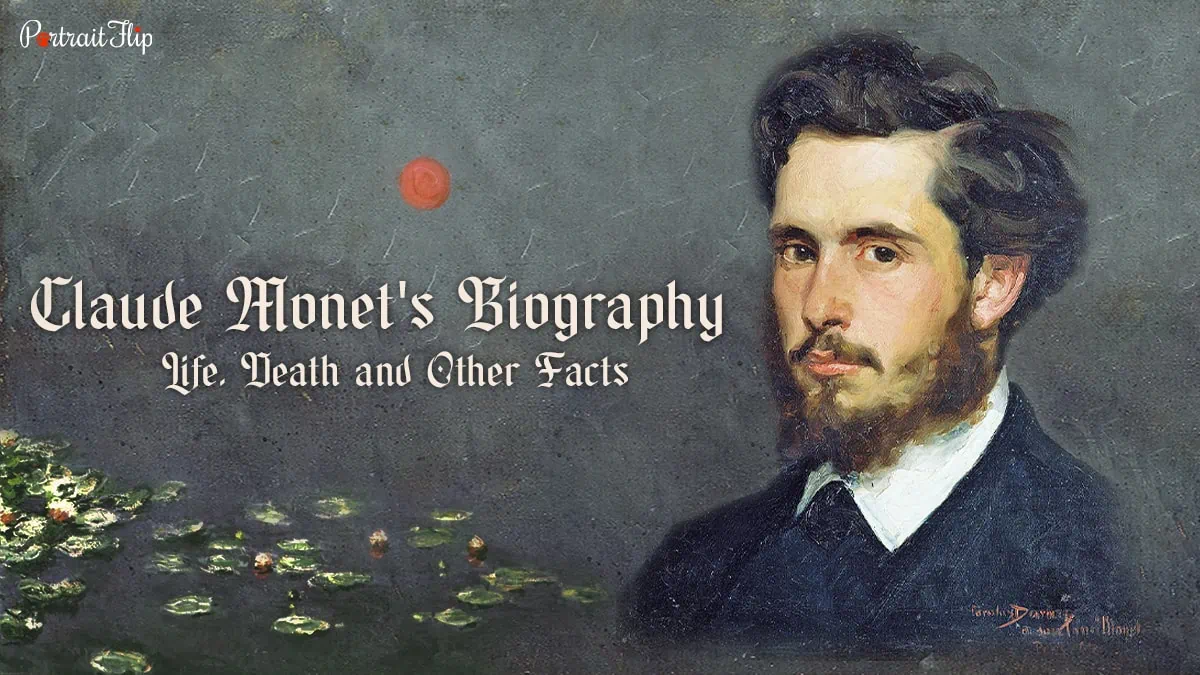Claude Monet!
An artist who provoked the world to see art through a different perspective, or, I must say, an impression of the world through Monet’s lens!
He was an example and inspiration for many artists, and his artwork gained popularity over the years.
Amid the chaos, his art gave him peace and stress at the same time, or, as he said:
“The further I get, the more I regret how little I know.”
His life was not as easy as it looked; he faced a fair share of hardships.
Even at times when he was on the verge of giving up, his art was what saved him every time.
He is called a legend of the art world for a reason.
So, let us try to understand Claude Monet’s life with this blog.
Suggested Read: About the famous painter Rembrandt
Table of contents
Claude Monet’s Early Years
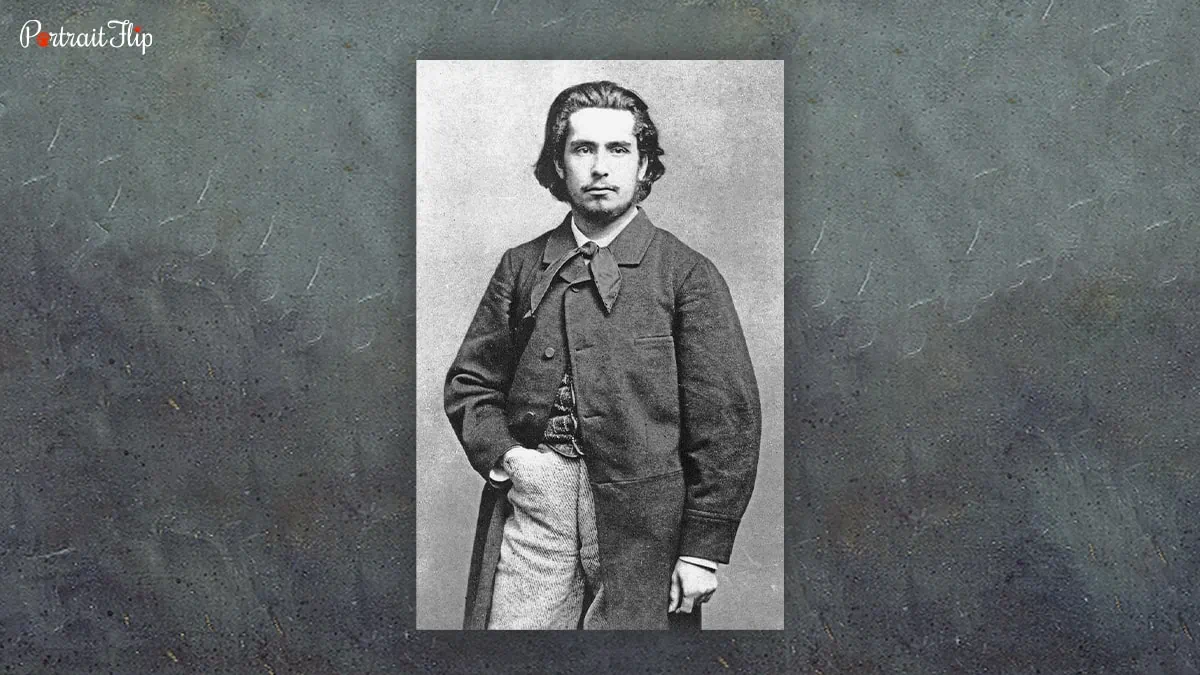
Oscar Claude Monet, famously known as Claude Monet, was born on November 14, 1840, in Paris.
He was only five-year old when he moved to Le Havre with his family. Le Havre is a coastal town in the northern part of France.
He hailed from a well-to-do family in which his father, Claude-Adolphe was a successful shopkeeper who became a shipper with time.
His mother, Louise-Justine Aubrée Monet, was a singer.
Claude Monet’s father wanted him to become a shopkeeper as well, but Monet’s destiny had other plans that later inspired him to become an artist.
Monet’s mother passed away when he was five-years-old.
He was known as a notorious child in his early days, when he would often skip classes and hike along the bluffs and dunes.
He began learning drawing and painting as a child at the College du Havre, where he was a student of the famed Neoclassical painter Jacques-Louis David.
Suggested Read: Wassily Kandinsky’s Biography
Who Influenced Him?
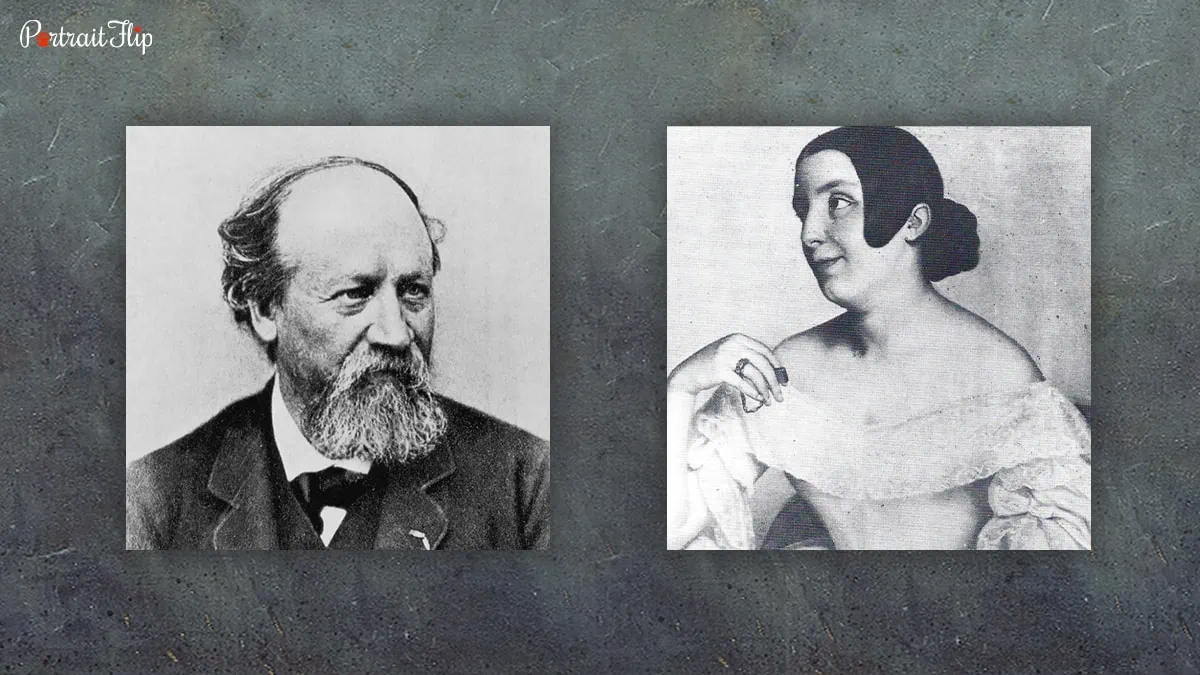
Claude Monet started to study at the Le Havre School of Arts with his mother’s support.
As a child, Monet was really into business and was highly money minded.
He started drawing caricature portraits in his spare time, and he put them up for sale for 10-20 francs a piece.
To your surprise, Claude Monet was able to save a significant amount of money from his painting sales by focusing on his early talent for art.
In the year 1856, he met Eugene-Louis Boudin, an advocate of impressionist art, on the beach of Normandy.
He is also credited as the forefather of impressionism.
During this period, Boudin spent lots of time painting all his works at the beach, and he requested Monet to do the same.
Boudin also provoked him to paint rather than create caricatures, and following his path, Monet started to paint as well.
As a matter of fact, Monet was fifteen years younger than Boudin, so he accepted Boudin as his teacher and guide.
Claude Monet learned oil painting as well as a technique called ‘en plein air’, which is a landscape painting technique.
He was obsessed with countryside landscapes and light, under the influence of Boudin.
Monet then eventually started creating Impression paintings that ranged from a painting of light falling onto a cathedral to water lilies floating in the pond.
Suggested Read: Deep Dive Into the World of Leonardo Da Vinci
Father of Impressionism
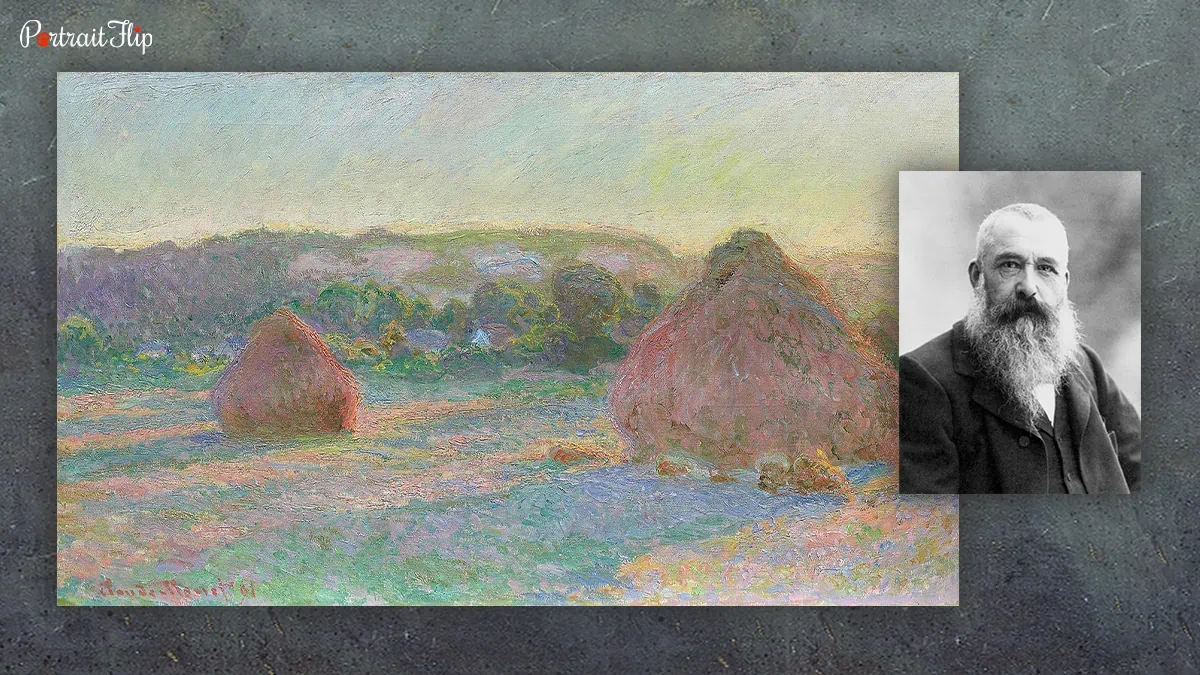
Claude Monet, all through his life, created many phenomenal works of art.
His mass appeal was very vast, and his Impressionism was paying him well.
Monet’s artistic production was performing really well, and his exceptionally long artistic production was pleasing to the eye of a lot of people.
It was Claude Monet who was the key and leading figure in the Impressionist movement that helped the famous French artist grow in the second half of the nineteenth century.
Considering Claude Monet’s career, he constantly depicted landscapes and leisure activities in Paris and the Normandy coast.
Today, Monet’s artworks are housed in some of the most prestigious museums around the world.
Suggested Read: Life of Vincent Van Gogh
Monet’s Painting Style and Techniques
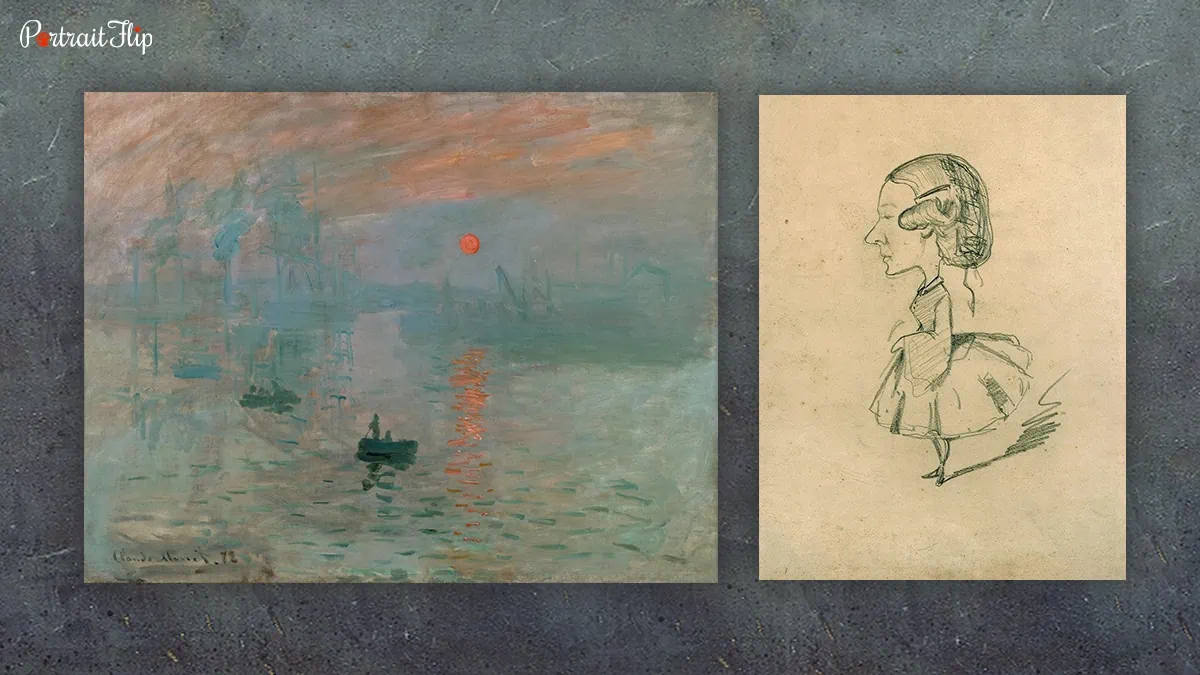
Claude Monet was known as the inspiration for Impressionism.
He recognized the booming influences of light on the local things and their effects on the color of things.
Color contrast was a critical part of the art that was created by the Impressionists.
His usage and mannerism in colors have been regarded as exemplary in the forms of the techniques.
The “basic” Impressionist idea of showing only what is obviously visible is best exemplified in “Impression, Sunrise.”
Monet thought that his only value came from having created directly in front of nature because he believed in the effects of light.
He attempted to convey my perceptions of the most transitory phenomena.
He blended the colors as he worked with the paints, believing that he was painting the air.
Suggested Read: Famous Paintings Housed in Louvre Museum
Famous Paintings by Claude Monet
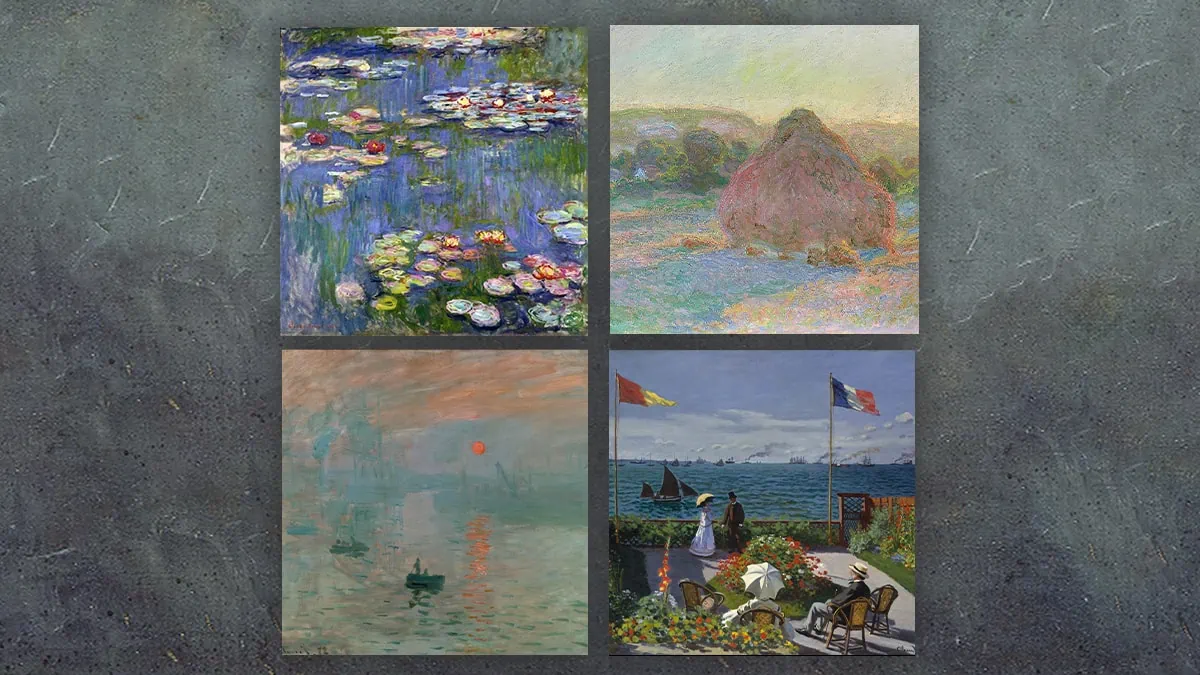
Claude Monet was famous for creating some of the most famous Impressionist paintings of all time.
His art was praised and is now placed in prestigious museums around the world.
Some of the most famous paintings by Claude Monet are:
Water Lilies–
Impression Sunrise–
Haystacks-
Garden at Sainte-Adresse-
Suggested Read: About Johannes Vermeer
His Influence on Art World
Monet’s legacy has had a vast and important impact on Modern and Contemporary art in many different genres and artistic forms.
Claude Monet achieved fame for being the initiator, leader, and unswerving advocate of the Impressionist style.
He did not attempt to faithfully recreate a scene as it was meticulously examined in his work; instead, he tried to capture on the spot the impression that a carefree, fleeting vision of the scene gave him.
Suggested Read: Composition VII by Wassily Kandinsky
Final Years of Monet’s Life
Claude Monet was in a happy relationship with his wife, Camille Doncieux, and with her, he had two sons, Jean and Michel.
Unfortunately, during the birth of Monet’s second son, Camille died, and Claude was left behind with his sons.
He took care of them, and they were also enlisted in the military for World War I.
On December 5, 1926, at the age of 86, Monet passed away from lung disease. He had a modest and straightforward funeral, as per his wishes.
Clémenceau noticed the black shroud meant for Monet’s coffin and hurried to swap it out for a floral cloth while exclaiming,
“No, not black for Monet!” In fact, Monet hardly ever used black in his artwork, preferring to mix darker hues to convey shadows that appear more dynamic.
Monet created a picturesque water-lily pond on his Giverny property in the 1910s and 1920s, which he painted almost exclusively.
His final series features the pond on a set of mural-sized canvases where abstract depictions of plants and water emerge from broad strokes of color and intricately layered textures.
So, this was it about the legendary life of Claude Monet and his evolution as a person and as an artist.
Suggested Read: White Center Painting by Mark Rothko
Conclusion
Amid all the fame coming his way, Claude Monet enjoyed painting alone in his home back in Giverny.
To this date, Claude Monet’s home is one of the main attractions of Giverny, which welcomes and hosts many tourists from all over the world.
In 1966, his heirs left his famous home and garden, complete with waterlily pond, to the French Academy of Fine Arts, a division of the Institut de France.
The home and gardens were renovated, and after that, they were made accessible to the public through the Fondation Claude Monet.
The house includes his collection of Japanese woodcut prints in addition to mementos of Monet and other items from his life.
The home is one of the two main attractions of Giverny, which hosts tourists from all over the world.
Author’s Note
If you are still here, then thank you so much for staying till the end!
This was all about the life of Claude Monet and his artistic struggles and adventures.
We try our best to provide you with the most refined and researched information, so if you find this blog helpful, then do leave your valuable feedback in the comments.
Also, we are active on social media platforms and post fun content there; say hi to us on Instagram or Pinterest.
We are actively posting on YouTube, so don’t forget to subscribe <3
See you soon; till then, stay hydrated!
Bye bye.
FAQs
Claude Monet was 86 years old when he unfortunately passed away.
The reason behind this is that he suffered from cataracts and was legally blind.
Initially, when Monet wanted to start a career in art, his mother supported him, and he began to paint because of money.



